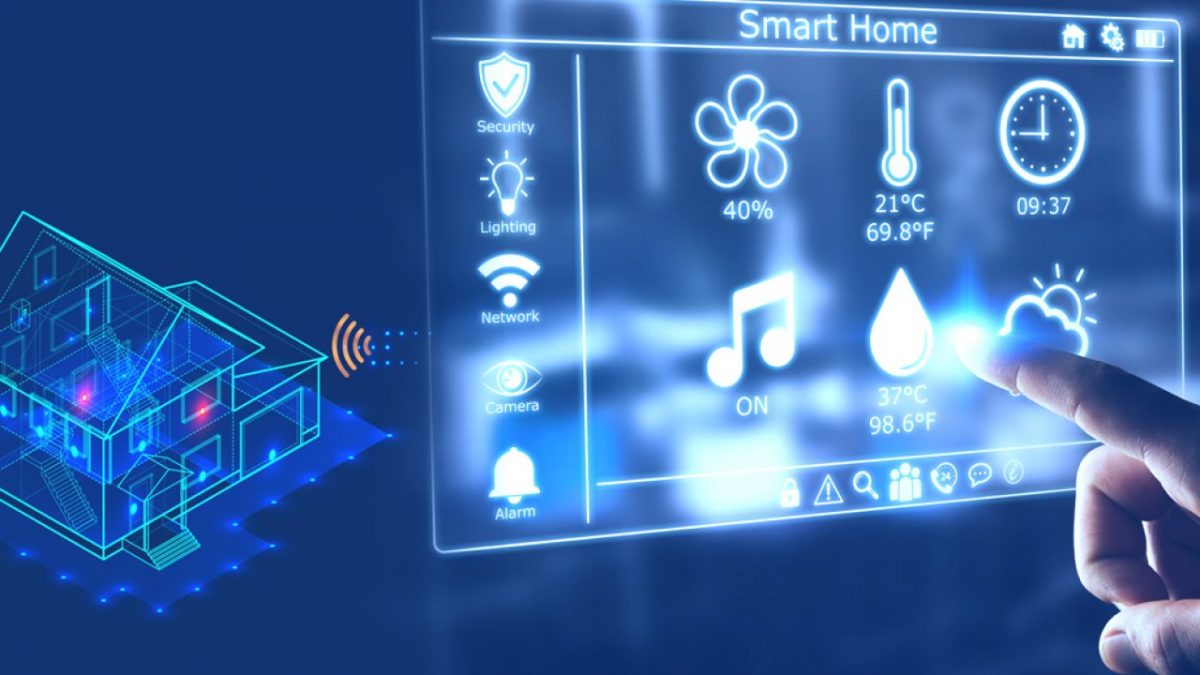In today's rapidly evolving technological landscape, transforming your home into a smart home is no longer a futuristic fantasyit's an achievable reality. For both homeowners and businesses, this smart home beginner guide will illuminate the path to a more connected, convenient, and efficient living environment. By seamlessly integrating technology into your daily life, you can enhance comfort, security, and energy efficiency like never before.
As we dive into this guide, we'll explore the essential components of a smart home, the benefits it offers, and how to get started on your journey to a smarter living space. Whether you're a tech enthusiast or a novice, this guide is designed to cater to your needs and inspire you to embrace the possibilities of smart living.

The Building Blocks of a Smart Home
At its core, a smart home consists of interconnected devices that communicate with each other to automate and streamline various tasks. The foundation of a smart home lies in its Internet of Things (IoT) ecosystem, where devices such as smart lights, thermostats, cameras, and speakers work together harmoniously.
One of the most crucial aspects of building a smart home is selecting the right hub or platform. Popular choices include Amazon Alexa, Google Assistant, and Apple HomeKit, each offering unique features and compatibility with a wide range of devices. Your choice of platform will largely depend on your personal preferences and the devices you plan to integrate.
Benefits of Embracing Smart Home Technology
The advantages of adopting smart home technology are vast and varied, making it an attractive option for homeowners and businesses alike. Here are some key benefits:
Convenience and Control
With smart home technology, you can control a multitude of devices with a simple voice command or a tap on your smartphone. This level of convenience extends to automating routine tasks, such as adjusting the thermostat before you arrive home or scheduling lights to turn on and off at specific times.
Enhanced Energy Efficiency
Smart devices are designed to optimize energy usage, reducing your carbon footprint and saving on utility bills. For instance, a smart thermostat can learn your schedule and adjust heating or cooling accordingly, while smart lights can automatically turn off when a room is unoccupied.
Security and Peace of Mind
Security is a top priority for any homeowner or business. Smart security systems offer features like real-time video surveillance, motion detection, and remote monitoring, allowing you to keep an eye on your property from anywhere in the world.
Getting Started: A Step-by-Step Guide
Embarking on your smart home journey may seem daunting, but breaking it down into manageable steps can make the process more approachable:
1. Assess Your Needs
Begin by identifying the areas of your home or business where smart technology can provide the most value. Are you looking to enhance security, improve energy efficiency, or simply increase convenience? Understanding your priorities will guide your decisions on which devices to adopt.
2. Choose Your Platform
Select a smart home platform that aligns with your needs and is compatible with the devices you plan to use. It's important to consider factors such as ease of use, compatibility, and available features when making your choice.
3. Start Small
It's wise to start with a few key devices and gradually expand your smart home ecosystem. This approach allows you to become familiar with the technology and make informed decisions about future additions. Popular starting points include smart speakers, lights, and thermostats.
Expanding Your Smart Home Ecosystem
Once you're comfortable with the basics, you can explore additional devices and functionalities to further enhance your smart home experience. Consider integrating smart locks for keyless entry, smart appliances for a connected kitchen, or smart blinds for automated window treatments. The possibilities are endless, and the choice is yours.
For more detailed guidance on setting up your smart home, you can visit the Feel Design's Installation Guide to ensure a seamless transition to smart living.
Smart Home Security: Protecting Your Investment
As you build your smart home, it's crucial to prioritize security to protect your investment. Implementing best practices for smart home security will safeguard your devices and data from potential threats. Ensure that your Wi-Fi network is secure, regularly update your devices, and consider using a dedicated network for smart home devices.
Conclusion: Embrace the Future with Confidence
This smart home beginner guide has provided you with the knowledge and insights needed to embark on your smart home journey. By embracing smart home technology, you can transform your living or working space into a hub of convenience, efficiency, and security. As you explore the possibilities, remember that the key to a successful smart home lies in thoughtful planning and ongoing learning.
For more insights and tips on DIY smart home setup, you can check out additional resources that will aid you in your journey.

FAQ
What is the first step in setting up a smart home?
The first step is to assess your needs and determine which areas of your home would benefit most from smart technology. This will help you prioritize your investments and choose the right devices to start with.
Do I need to replace all my existing devices with smart ones?
No, you don't need to replace everything at once. It's best to start small and gradually integrate smart devices into your home. Many smart devices are designed to work alongside existing ones, providing flexibility in your upgrades.
How can I ensure the security of my smart home?
To secure your smart home, make sure your Wi-Fi network is protected with a strong password, regularly update your devices, and consider using a separate network for your smart home devices. For more detailed security tips, visit smart home security tips.

